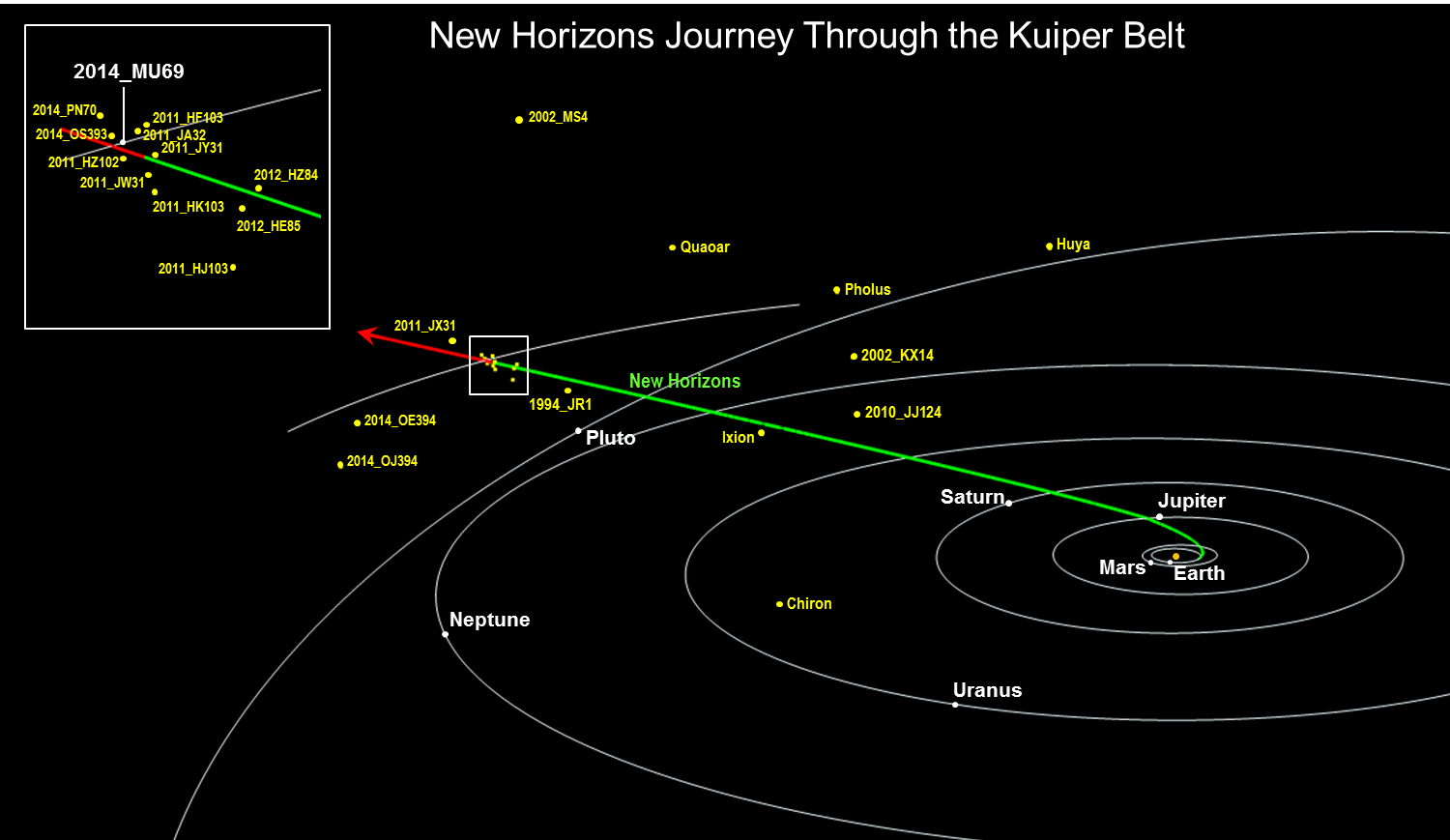A very quick blog today, as I have been occupied all day in wood preparation (of which, more another day).
So this is to celebrate the safe passage of the New Horizons space probe past Ultima Thule, a small rock out beyond Pluto, out in the Kuiper Belt. The flyby – at some 44 kilometres per hour – happened around 5:30 am UK time on January 1st, when I suspect most of us were still in bed after the New Year’s Eve celebrations!

So far all we have had back are a few low-resolution images on the final stages of approach, and a post-flyby signal confirming that the probe had survived. This survival was by no means guaranteed – nobody knew if Ultima Thule was accompanied by clouds of dust or smaller rocks, and hitting them at 44kph would have been fatal.
However, there is something like 7GB of data waiting to be sent home, all to be sent by a transmitter much less powered than the average light bulb, with each signal taking over 6 hours to get home. It’s rather extraordinary that we can pick up the data download at all, and at such a low data rate it will take the better part of two years to get the whole lot back safely.
New Horizons – until now – has been best known for the remarkable pictures of Pluto and Charon, which we enjoyed back in 2015. These have radically reshaped our views of these bodies, and vastly enriched our understanding of them. Not only that, but they inspired large parts of the setting of The Liminal Zone, which could not have existed in its present form without this additional knowledge.

So here by way of celebration is a short extract from The Liminal Zone, using geography that would have been pure guesswork before 2015.
In the approach vid, Charon was rapidly changing from a remote celestial body into a diversely coloured and textured terrain. From a bright point of light, to a disk which filled the sky. From a name, to a home, however temporary. She gazed intently at it, trying to fix the setting in her mind. The habitat was situated on the interface between the largely flat expanse of Vulcan Planum on one side, and rugged folds of hills alongside Serenity Chasma on the other. She had briefly skimmed the original surveyors’ reports; so far as she remembered, the location was a compromise between stability and ease of construction.
As yet, I have no plans to set a book out in the Kuiper Belt, but who knows what might happen when the full data set comes back?
